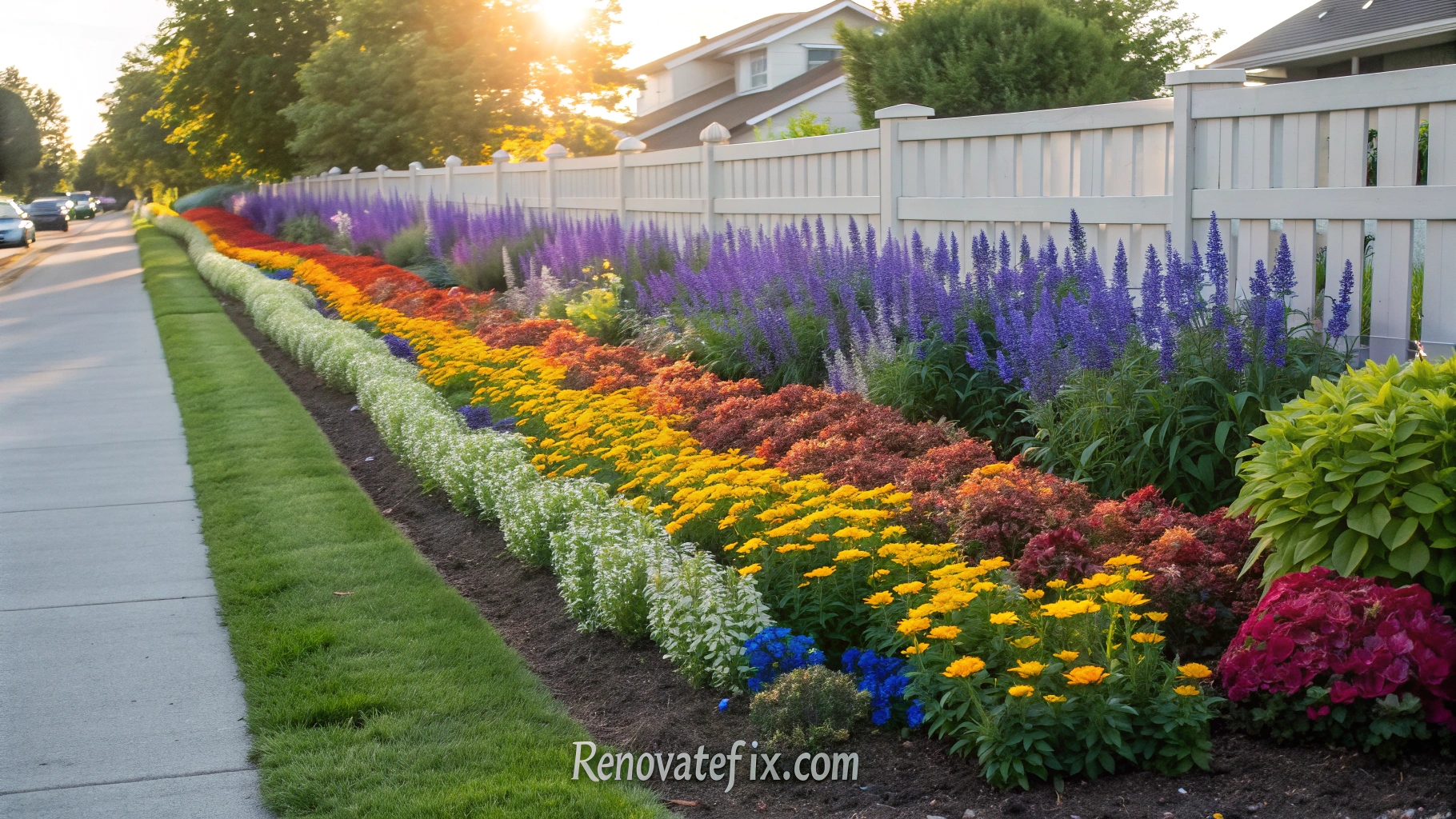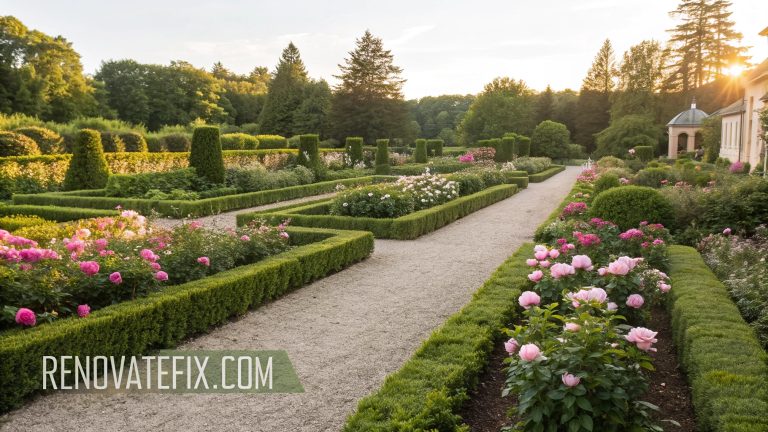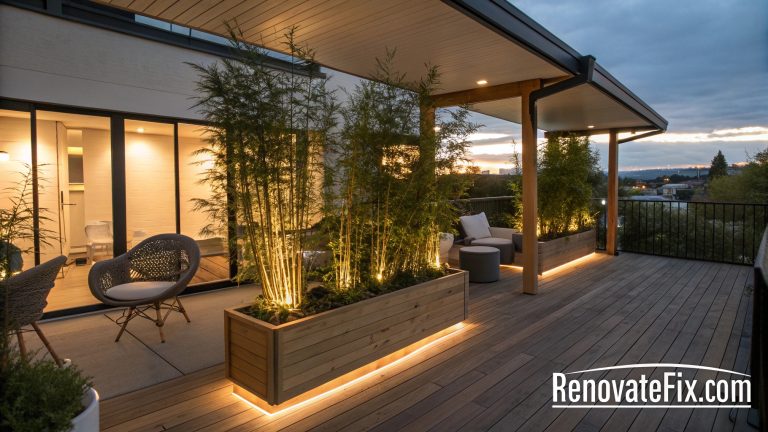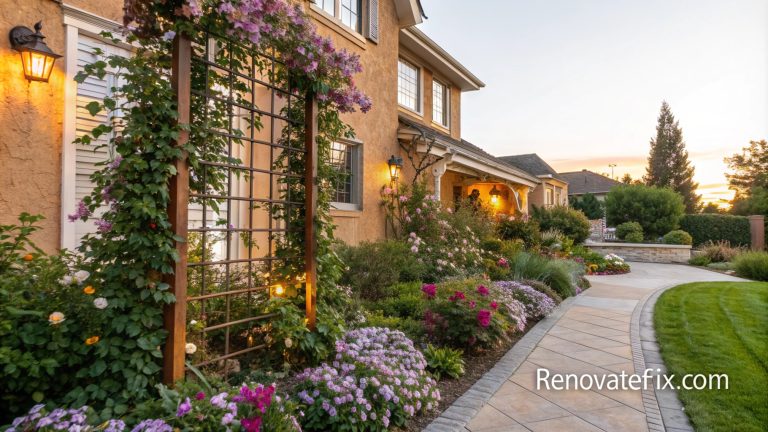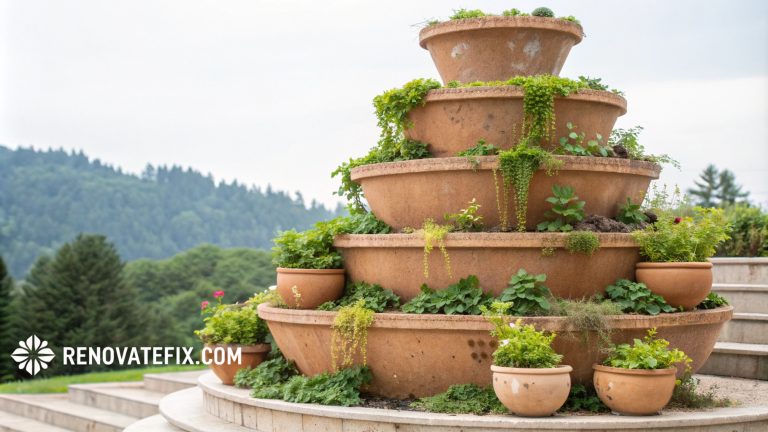15 Stunning Full Sun Flower Bed Ideas to Brighten Your Garden
Creating a vibrant flower bed that thrives in direct sunlight offers endless possibilities for color and texture in your landscape.
Full sun flower beds become spectacular focal points when planned thoughtfully, combining drought-tolerant plants with sun-loving blooms that flourish in these bright conditions.
Whether you’re looking to attract pollinators, add curb appeal, or simply enjoy a rainbow of colors throughout the growing season, these fifteen inspiring ideas will help you maximize your sunniest garden spots.
From cottage-style arrangements to structured modern displays, these concepts will transform barren sunny spaces into magnificent flowering havens that captivate visitors and provide seasonal beauty year after year.
1. Rainbow Gradient Border
Arrange flowers in a progressive color sequence from cool purples through warm reds, creating a stunning visual flow along a sunny walkway or fence line.
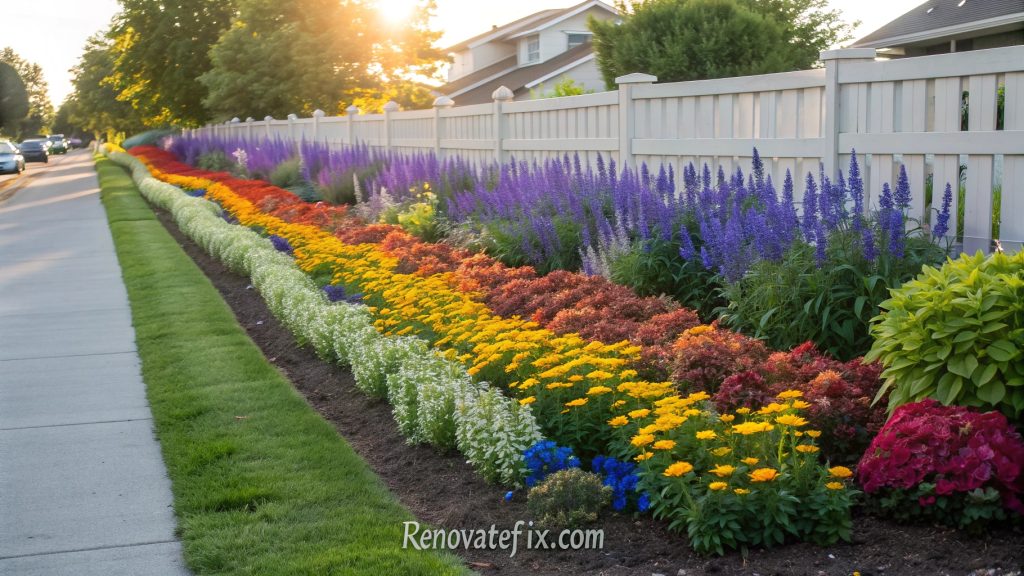
This artistic approach uses height variations with tall delphiniums and snapdragons at the back, medium zinnias and coneflowers in the middle, and short marigolds or portulaca as front edging.
The gradient effect dazzles visitors while providing consistent blooms from spring through autumn, making optimal use of full sun exposure for plants that need significant light to produce their vivid pigments.
2. Mediterranean Drought-Resistant Garden
Create an elegant, water-wise flower bed inspired by sun-drenched coastal regions using plants adapted to dry conditions and intense light.
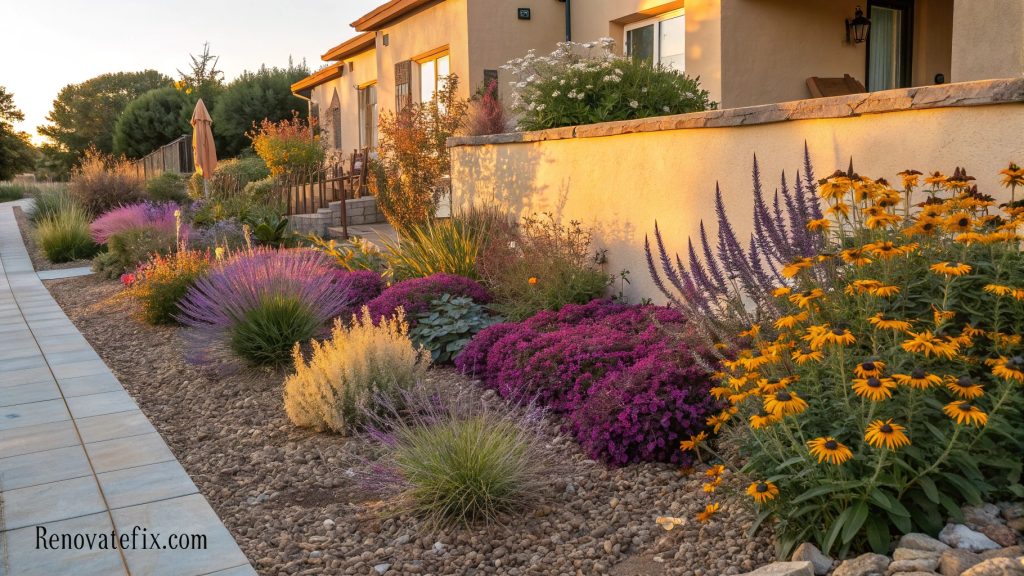
Lavender, sage, and rosemary provide structural elements with their woody stems and aromatic foliage, while bright gazanias, ice plant, and globe thistle contribute bold pops of color throughout hot summer months.
This approach combines ornamental grasses for movement with flowering perennials for seasonal interest, requiring minimal irrigation once established.
3. Cottage Garden Abundance
Develop a seemingly carefree yet carefully planned flower bed bursting with old-fashioned favorites that adore full sunshine.

Hollyhocks, cosmos, daisies and foxglove mingle freely in this approach, creating a romantic, nostalgic atmosphere with plants at various heights blooming in succession.
Self-seeding annuals fill gaps between perennials, ensuring continuous color while attracting beneficial insects and butterflies to your garden space.
4. Prairie-Inspired Wildflower Meadow
Fashion a naturalistic flower bed mimicking native grassland ecosystems using rugged perennials that withstand intense sun and occasional drought conditions.
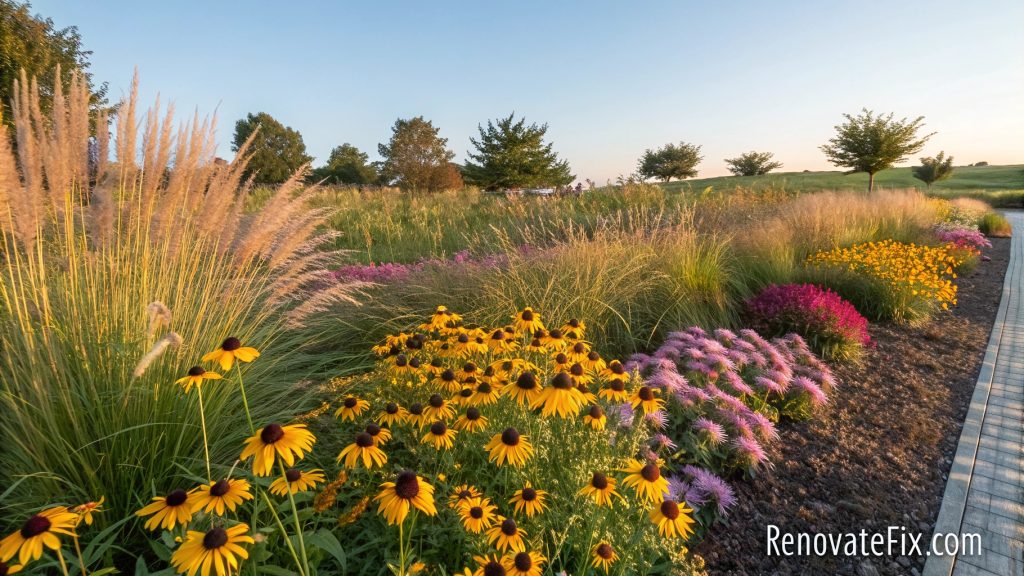
Black-eyed Susans, coneflowers, blazing stars and ornamental grasses sway gracefully in summer breezes, creating habitat for birds and pollinators while requiring minimal maintenance after establishment.
This prairie-style approach provides four-season interest with seedheads and structural elements persisting through winter months.
5. Formal Geometric Parterre
Construct a sophisticated symmetrical flower bed with clearly defined shapes filled with sun-loving annuals for consistent color impact.
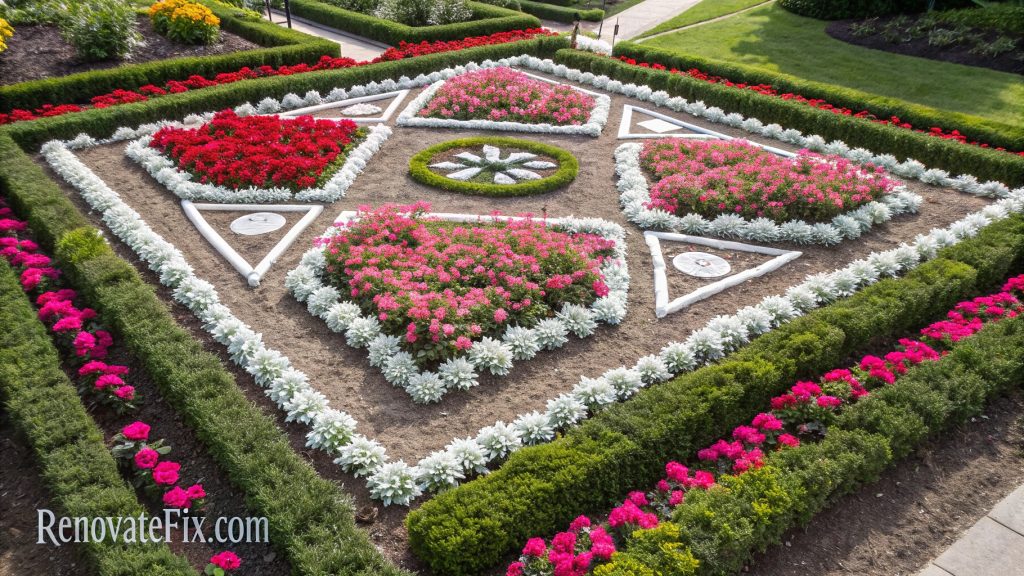
Petunias, geraniums, sweet alyssum and dusty miller planted in precise patterns create an elegant display reminiscent of historic
European gardens but using modern, heat-tolerant varieties. This approach emphasizes visual order through repeated forms and complementary colors, making striking use of level, open sunny areas.
6. Butterfly and Bee Haven
Establish a pollinator paradise using nectar-rich flowers that flourish under direct sunlight and attract beneficial wildlife to your garden.
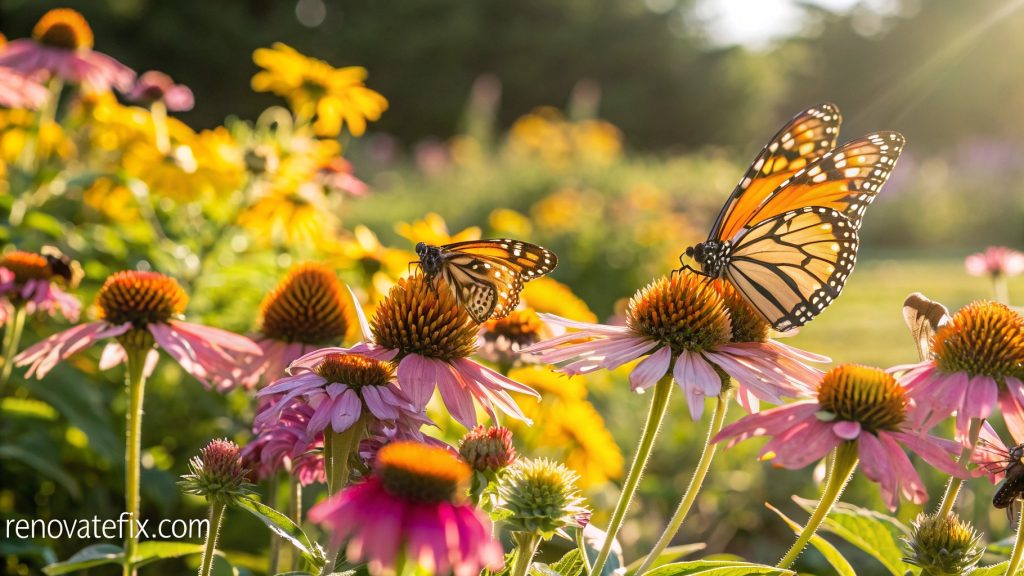
Butterfly bush, milkweed, bee balm and coneflowers provide continuous blooming from spring through fall, supporting diverse insect populations while creating vibrant visual displays.
This ecological approach combines various flower shapes and heights to accommodate different pollinator feeding habits.
7. Cutting Garden Rows
Plant parallel rows of flower varieties specifically grown for harvesting and indoor arrangements, maximizing sun exposure for strong stems and abundant blooms.
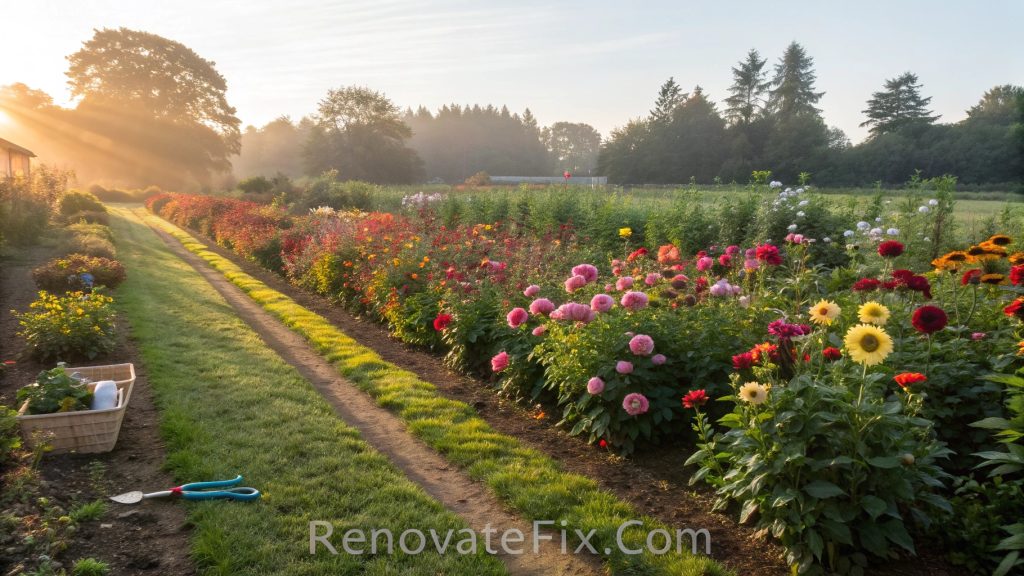
Dahlias, zinnias, cosmos and sunflowers thrive under this systematic cultivation method, producing countless stems for bouquets while maintaining an organized, productive appearance in your landscape.
This practical approach allows easy access between rows for maintenance and gathering flowers throughout growing seasons.
8. Rock Garden Succulents
Build a striking low-water flower bed incorporating drought-resistant succulents and alpine plants that excel under blazing sun conditions.
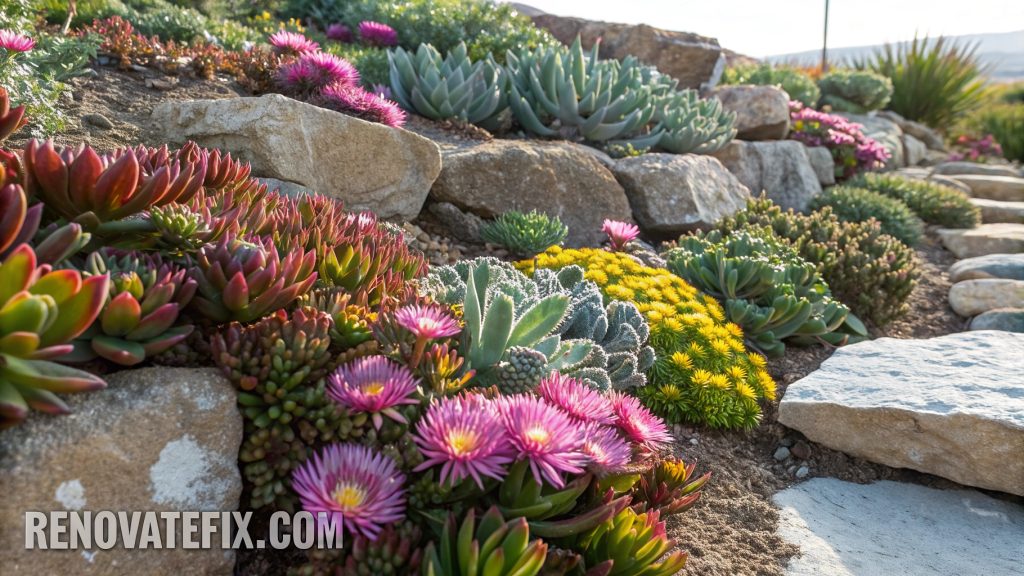
Sedums, sempervivums, ice plants and agaves create fascinating textural combinations while producing surprising floral displays during their blooming periods.
This approach uses stone elements to retain heat, improve drainage and highlight architectural plant qualities.
9. Cut-Leaf Texture Focus
Develop a sophisticated flower bed emphasizing varied foliage shapes that maintain visual interest even between blooming cycles.
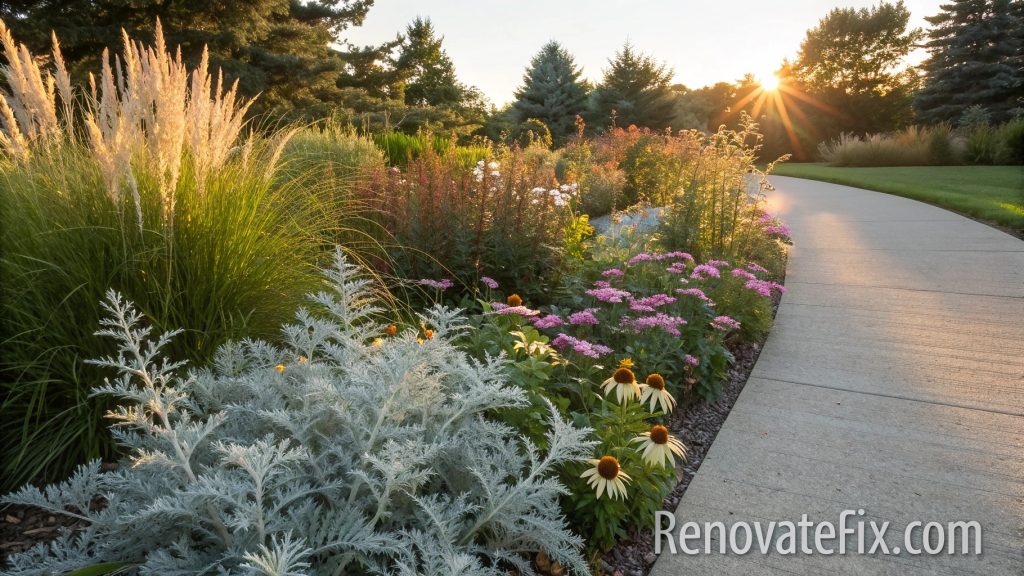
Yarrow, Russian sage, artemisia and ornamental grasses provide fascinating leaf patterns that shimmer under direct sunlight, creating movement and depth within your garden space.
This approach balances delicate, lacy textures against bold forms while maintaining drought tolerance.
10. Monochromatic Color Scheme
Craft an elegant flower bed using variations of a single color family, creating sophisticated visual impact through subtle hue differences rather than contrasting colors.
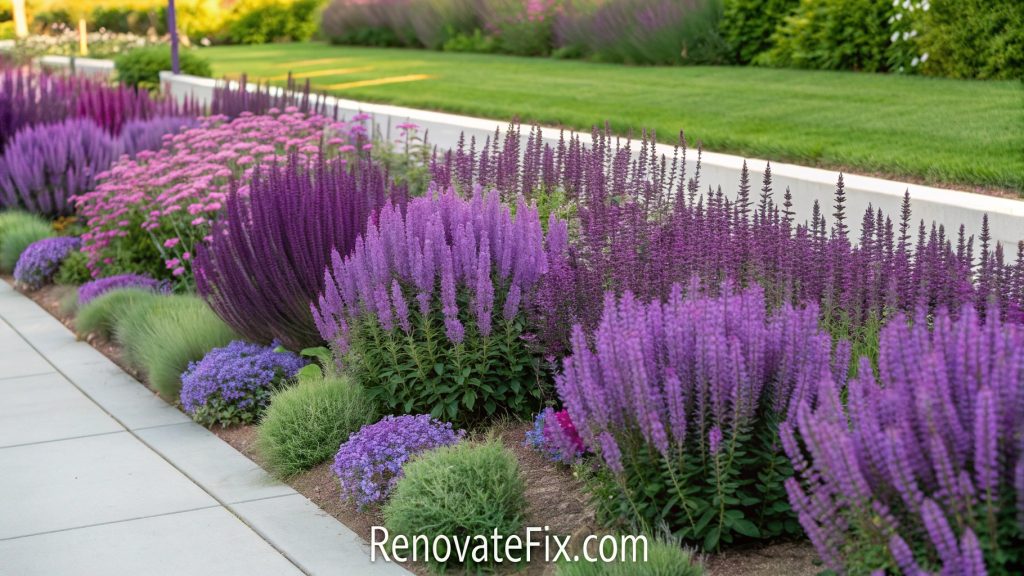
Purple salvias, verbenas, alliums and catmints blend harmoniously while offering textural variety and sequential blooming in sunny locations.
This artistic approach appears deceptively simple while actually requiring careful plant selection for continuous interest.
11. Autumn Glory Display
Focus on late-season bloomers that reach peak performance when summer flowers fade, extending garden enjoyment into cooler months.
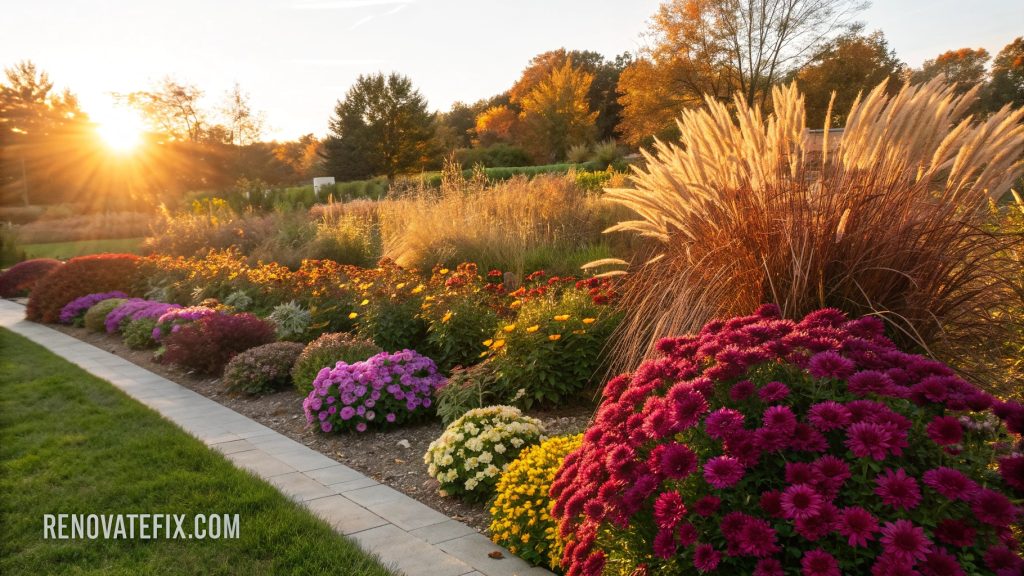
Asters, chrysanthemums, rudbeckias and ornamental grasses develop spectacular colors under autumn sunlight while maintaining structure through early frosts.
This strategic approach ensures your sunny garden space remains vibrant when neighboring landscapes begin declining.
12. Fragrance Garden Path
Design a sensory experience along a sunny walkway using highly scented flowers that release perfume when warmed by direct sunlight.
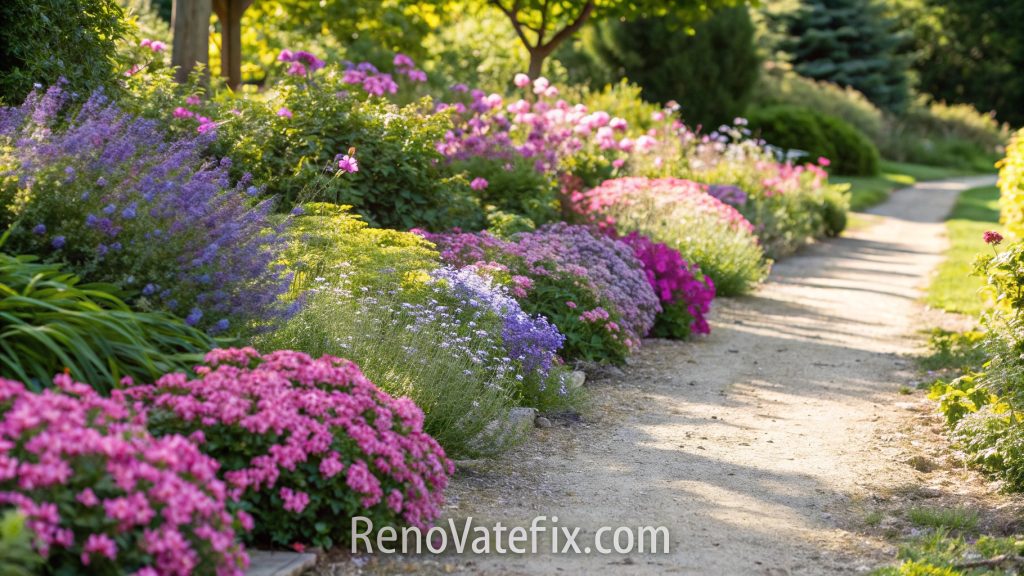
Dianthus, lavender, heliotrope and phlox create waves of fragrance throughout growing seasons, inviting visitors to pause and appreciate both visual and olfactory pleasures.
This multisensory approach maximizes sunlight’s ability to release essential oils from plant tissues.
13. Four-Season Structure
Construct a flower bed with permanent architectural elements paired with seasonal blooms, ensuring year-round visual interest in sunny locations.

Evergreen candytuft provides winter structure while spring bulbs, summer perennials and autumn sedums cycle through blooming periods around these constant features.
This methodical planning approach prevents barren periods while maximizing flowering potential during growing seasons.
14. Vertical Growing Wall
Maximize limited sunny spaces by building upward with climbing flowers and cascading varieties growing on trellises, obelisks or wall-mounted planters.
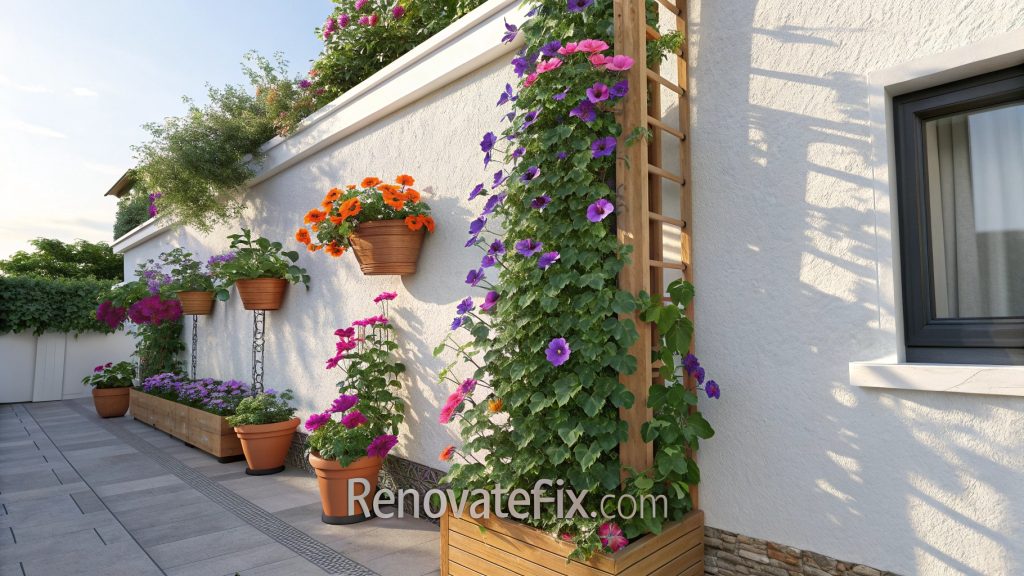
Morning glories, nasturtiums, trailing petunias and climbing roses flourish with vertical support while creating dramatic visual impact in tight areas receiving full sunlight.
This space-efficient approach draws eyes upward while cooling adjacent structures.
15. Desert-Inspired Xeriscape
Embrace hot, dry conditions with a flower bed showcasing drought-masters that thrive under relentless sun exposure with minimal supplemental water.

Penstemon, gaillardia, yucca and globe thistle combine architectural forms with surprising bloom cycles, creating sustainable beauty in challenging locations.
This environmentally conscious approach reduces water consumption while providing habitat for specialized pollinators adapted to arid conditions.
Conclusion
Full sun flower beds offer incredible opportunities to showcase nature’s most vibrant bloomers while creating sustainable, eye-catching landscapes.
By thoughtfully selecting plants suited to intense light conditions and combining them in creative arrangements, you can establish stunning garden spaces that evolve through seasons and require minimal intervention once established.
Whether your preference leans toward formal geometry or naturalistic wildness, drought-tolerance or abundant cutting flowers, these fifteen inspiration points provide starting frameworks for developing your own sun-drenched masterpiece.
Remember that successful sunny gardens begin with proper soil preparation, thoughtful plant selection, and appropriate spacing to allow air circulation while creating the visual density that makes flower beds so appealing.
With these ideas as foundation, your full sun areas will become the most celebrated features of your landscape, delivering waves of color, texture, and seasonal interest year after year.

